Are you having a hard time picking between rock phosphate vs bone meal for tomatoes? Well, both rock phosphate and bone meal are valuable phosphorus sources for tomatoes.
Where rock phosphate has higher phosphorus content and suits soils with low phosphorus levels. Bone meal, on the other hand, is also a good source but has slightly lower phosphorus content and offers additional benefits like calcium supply.
What is Rock Phosphate?
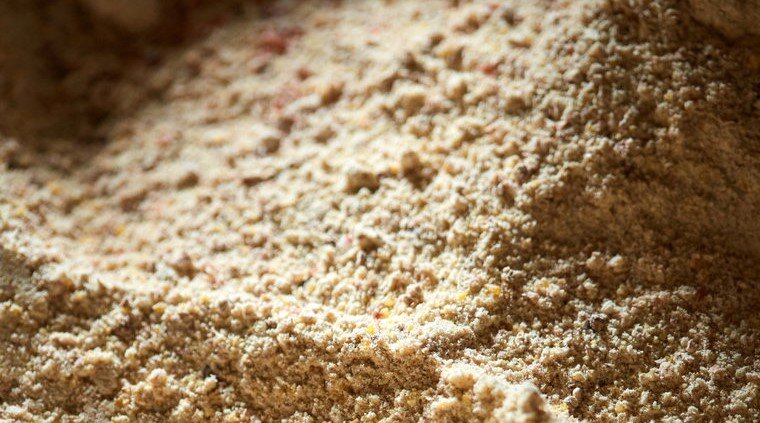
Rock phosphate is a naturally occurring mineral deposit that is primarily used as a source of phosphorus, an essential nutrient for plants and agricultural crops. It is also known as phosphorite and is formed through the accumulation of organic remains, mainly from marine creatures, over geological time.
The main component of rock phosphate is calcium phosphate, along with various other minerals like fluorides, carbonates, and silicates. The phosphorus content in rock phosphate can vary depending on the deposit’s geological origin and location.
In agriculture, rock phosphate is utilized as a slow-release fertilizer. When applied to the soil, it gradually releases phosphorus, making it available to plants over an extended period. This slow-release property is advantageous, as it reduces the risk of nutrient leaching and allows for more efficient nutrient uptake by plants.
Due to its natural origin and slow-release properties, rock phosphate is often considered an organic fertilizer option, though it may not meet organic certification standards in some regions, depending on the extraction and processing methods.
It’s worth noting that while rock phosphate is a valuable phosphorus source, its availability and effectiveness in providing phosphorus to plants can be influenced by soil characteristics, weather conditions, and specific crop needs.
In some cases, it might be necessary to treat rock phosphate or use it in combination with other fertilizers to optimize its benefits for crop production.
Benefits of Using Rock Phosphate for Tomatoes
Using rock phosphate fertilizer for tomatoes can offer several benefits, especially in the context of sustainable and organic gardening practices. Here are some advantages of using rock phosphate for tomatoes:
Phosphorus Supply
Rock phosphate is an excellent source of phosphorus, a crucial nutrient for the development of strong roots, healthy fruiting, and overall plant growth. Phosphorus is vital for energy transfer within the plant and plays a significant role in fruit formation and seed production.
Slow-Release
Rock phosphate is a slow-release fertilizer, which means that it releases phosphorus gradually over time. This slow-release characteristic ensures a more sustained and consistent supply of phosphorus to the tomato plants, reducing the risk of nutrient leaching and minimizing the need for frequent reapplications.
Sustainability
Rock phosphate is a naturally occurring mineral, making it a sustainable and environmentally friendly option for fertilizing tomatoes. It reduces reliance on synthetic fertilizers and minimizes the potential negative impacts associated with the production and use of chemical fertilizers.
Soil Health
Adding rock phosphate to the soil can improve its overall health and fertility. It aids in enhancing soil structure, moisture retention, and nutrient-holding capacity, benefiting not just tomatoes but other crops grown in the same soil as well.
Long-lasting Effects
Because of its slow-release nature, a single application of rock phosphate can provide benefits to tomato plants throughout the growing season. This can lead to reduced labor and costs associated with frequent fertilizer applications.
Balanced Nutrient Content
Rock phosphate often contains other essential minerals and trace elements, which contribute to a more balanced nutrient supply to tomato plants. These additional nutrients can support better plant health and improve the nutritional quality of tomatoes.
Organic Gardening
For gardeners who follow organic practices, rock phosphate is considered an acceptable and natural fertilizer option. It can help maintain organic certification status while providing essential nutrients to tomatoes.
However, it’s important to note that rock phosphate might not be immediately available to plants in certain soil conditions, especially in soils with a high pH or low microbial activity. In such cases, gardeners may need to apply amendments or use complementary fertilizers to enhance phosphorus availability to tomato plants.
Additionally, soil testing and understanding the specific nutrient needs of the tomatoes being grown can help ensure the appropriate and effective use of rock phosphate fertilizer.
How to Use Rock Phosphate for Plants?
When using rock phosphate as a fertilizer for plants, including tomatoes, requires proper application to ensure its effectiveness. Here’s a step-by-step guide on how to use rock phosphate:
Soil Test
Before applying any fertilizer, including rock phosphate, it’s essential to conduct a soil test. A soil test will provide valuable information about the current nutrient levels and pH of your soil. This will help you determine if your soil needs additional phosphorus and if rock phosphate is the appropriate choice.
Choose the Right Product
There are different forms of rock phosphate available, such as crushed rock phosphate, colloidal phosphate, and soft rock phosphate. Select the form that suits your needs and is suitable for your soil type.
Preparation
If using powdered or granulated rock phosphate, mix it thoroughly with the soil before planting or during soil preparation. This ensures even distribution of the fertilizer and increases the chances of proper nutrient uptake by the plants.
Planting
For new plantings, incorporate the rock phosphate into the soil before placing the young tomato plants. Dig a hole or trench, add the recommended amount of rock phosphate based on the soil test results, and mix it well with the soil.
Established Plants
If the tomato plants are already established, you can apply rock phosphate around the base of the plants. Be cautious not to place the fertilizer directly in contact with the stems, as it may cause burning.
Avoid Overapplication
Rock phosphate is a slow-release fertilizer, so it’s crucial not to overapply it. Too much phosphorus can lead to imbalanced nutrient levels and potentially harm the plants. Follow the manufacturer’s guidelines or recommendations from your soil test to determine the appropriate application rate.
Watering
After applying rock phosphate, water the plants thoroughly. This helps to activate the slow-release properties of the fertilizer and encourages nutrient absorption by the plant roots.
Mulching
Consider using organic mulch around the tomato plants. Mulch helps conserve moisture, suppress weed growth, and gradually decompose, adding organic matter and nutrients to the soil over time.
Monitor and Adjust
Keep an eye on the tomato plants throughout the growing season. If you notice any signs of nutrient deficiencies or excesses, make adjustments accordingly. Soil conditions can vary, and additional fertilization might be necessary to ensure optimal plant growth.
Long-term approach
Rock phosphate provides a slow and steady supply of phosphorus over time. It is not a quick-fix solution but rather a part of a long-term approach to maintaining soil fertility and supporting plant health.
Remember, while rock phosphate is beneficial for certain soils and crops, it may not be the best option for all situations. Soil testing and understanding your plant’s specific nutrient requirements are key to making informed decisions about fertilization.
Additionally, consider using organic and sustainable practices to promote overall soil health and reduce environmental impacts.
What is Bone Meal?
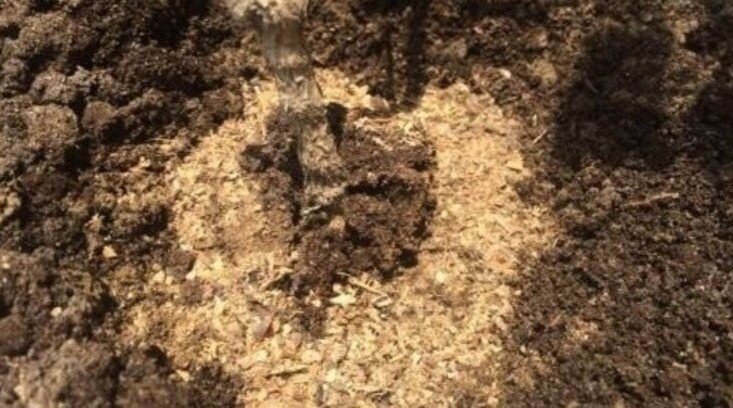
Bone meal is a natural organic fertilizer derived from finely ground animal bones. It is produced by crushing and pulverizing animal bones, usually from cattle, and processing them into a powder or granular form.
The bones used in bone meals are typically sourced from slaughterhouses, meat processing plants, or other sources of animal by-products. Bone meal is rich in essential nutrients, primarily phosphorus and calcium, with smaller amounts of nitrogen and other trace minerals.
The nutrient content can vary depending on the source and processing methods, but bone meal generally contains about 3-6% nitrogen, 12-27% phosphorus, and 0-5% potassium. It also provides a range of micronutrients like magnesium, sulfur, zinc, and boron.
Last I covered a topic on 16-16-8 Liquid Fertilizer for Corn. So, if you have corn plants at home please check this out.
Benefits of Using Bone Meal for Tomatoes
If you use bone meal as a fertilizer for tomatoes can provide several benefits, as it offers essential nutrients that are beneficial for their growth and development. Here are some advantages of using bone meal for tomatoes:
Phosphorus-rich Source
Bone meal is high in phosphorus, which is vital for strong root development, flower formation, and fruit production in tomatoes. Phosphorus promotes early root growth, helping young tomato plants establish themselves more effectively.
Calcium Supply
Bone meal is a good source of calcium, which is essential for the structural integrity of tomato plants. Sufficient calcium levels in the plant tissues can help prevent common physiological disorders like blossom end rot, where the bottom of the tomato fruit becomes dark and leathery due to calcium deficiency.
Slow-release Properties
Bone meal acts as a slow-release fertilizer, gradually providing nutrients to tomato plants over time. This slow-release characteristic ensures a steady supply of phosphorus and calcium, which is particularly beneficial during the entire growing season.
Natural and Organic
Bone meal is an organic product derived from animal bones, making it suitable for organic gardening practices. It aligns with sustainable gardening principles and is often approved for use in organic farming systems.
pH Adjustment
Bone meal has an alkaline nature, which can help to slightly raise the soil’s pH if it is too acidic. This is beneficial for tomatoes, as they generally prefer a slightly acidic to neutral pH range (around 6.0 to 7.0).
Healthy Fruiting
With its phosphorus and calcium content, bone meal can contribute to improved flower development and fruit set in tomatoes. The enhanced nutrient supply encourages better fruit quality and overall yield.
Soil Health
Bone meal can also contribute to overall soil health by adding organic matter and essential nutrients to the soil. This can enhance soil structure, nutrient-holding capacity, and microbial activity, benefiting not just tomatoes but other plants in the same soil as well.
When using bone meal for tomatoes, it’s essential to follow the recommended application rates based on the nutrient requirements of the soil and the specific growth stage of the tomatoes.
Too much phosphorus can lead to imbalances and may not be beneficial for the plants. Conducting a soil test before application can help determine the soil’s nutrient levels and guide the appropriate use of bone meal and other fertilizers.
Additionally, consider using bone meal in combination with other organic fertilizers and compost to create a balanced and comprehensive nutrient supply for tomatoes. Overall, bone meal can be a valuable addition to tomato gardening, especially for gardeners seeking organic and sustainable nutrient sources.
How to Use Bone Meal for Plants?
As a fertilizer for plants bone meal is relatively straightforward, and it can be applied in various ways depending on the growth stage of the plants and the specific nutrient needs. Here’s how to use a bone meal for plants effectively:
Soil Preparation
Before planting, you can incorporate a bone meal into the soil to enrich it with essential nutrients. For new garden beds or containers, spread the recommended amount of bone meal evenly over the soil surface.
Established Plants
For established plants, such as perennials, shrubs, or trees, you can apply bone meal around the base of the plants. Carefully scatter the bone meal on the soil surface, avoiding direct contact with the plant’s stems or foliage.
Mixing with Soil
If using powdered or granular bone meal, mix it thoroughly with the top few inches of soil. This ensures the even distribution of the fertilizer and helps plant roots access nutrients effectively.
Transplanting
When transplanting seedlings or young plants, you can add a small amount of bone meal to the planting hole to provide an extra boost of nutrients for the new roots.
Application Rate
Follow the manufacturer’s guidelines or the recommendations of a soil test to determine the appropriate application rate. Avoid over-applying bone meal, as excessive phosphorus can lead to nutrient imbalances.
Watering
After applying bone meal, water the plants thoroughly. This helps activate the slow-release properties of the fertilizer and facilitates nutrient uptake by the plant roots.
Mulching
Consider applying an organic mulch around the plants after applying bone meal. Mulch helps retain moisture, suppress weeds, and gradually decompose, adding more nutrients to the soil over time.
Annual Application
Depending on the plant’s nutrient requirements and soil condition, bone meal may need to be reapplied annually. However, it’s best to perform a soil test before reapplication to determine if additional nutrients are necessary.
Timing
For some plants, such as bulbs or flowering perennials, it’s beneficial to apply bone meal before their active growth periods to support strong root development and enhanced flower production.
Organic Gardening
Bone meal is commonly used in organic gardening, as it is a natural, organic fertilizer. It aligns with sustainable gardening practices and can help promote healthier soil and plants.
Keep in mind that bone meal is primarily a phosphorus and calcium source, so it may not meet all the nutrient needs of plants. It’s essential to consider other nutrient requirements and use additional organic fertilizers or compost to provide a balanced nutrient supply.
Lastly, store the bone meal in a cool, dry place, away from direct sunlight and moisture, to maintain its effectiveness and prevent clumping. Always follow the specific guidelines provided on the product packaging and use it responsibly to support the health and vitality of your plants.
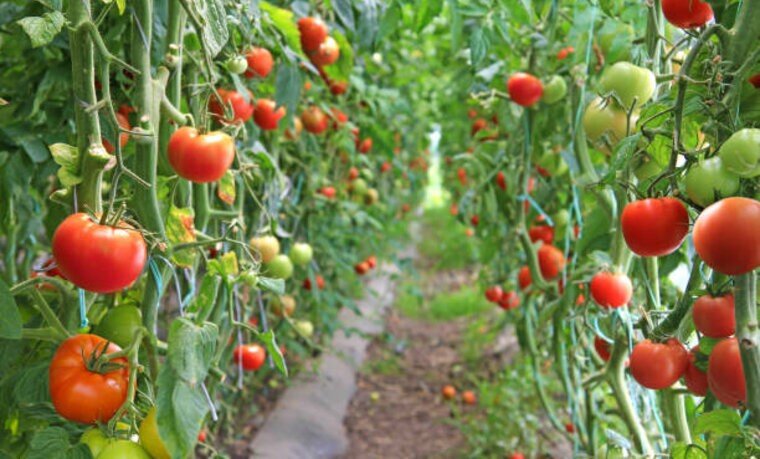
Rock Phosphate Vs Bone Meal for Tomatoes: Quick
Here’s a comparison table between rock phosphate vs bone meal for tomatoes as fertilizers:
| Criteria | Rock Phosphate | Bone Meal |
| Nutrient Composition | High in Phosphorus (P) and Calcium (Ca) | High in Phosphorus (P) and Calcium (Ca) |
| Nutrient Percentage | Phosphorus content varies but is generally higher | Phosphorus content varies but is generally lower |
| Release Rate | Slow-release provides nutrients over time | Slow-release provides nutrients over time |
| pH Impact | Generally neutral to slightly acidic | Slightly alkaline |
| Organic Gardening | Considered a natural and organic fertilizer option | Considered a natural and organic fertilizer |
| (may not meet all organic certification standards) | option (commonly used in organic gardening) | |
| Additional Nutrients | May contain other trace minerals and elements | May contain other trace minerals and elements |
| Suitability | Suitable for soils with low phosphorus levels | Suitable for soils with low phosphorus levels |
| and as part of long-term nutrient management | and as part of a long-term nutrient management | |
| plan. | plan. | |
| Application | Usually applied to the soil before planting or | Applied to the soil before planting or around |
| during soil preparation. | the base of established plants. | |
| Can also be mixed into the soil. | ||
| Purpose | Encourages root development, flower, and fruit | Encourages root development, flower, and fruit |
| production. | production. | |
| Caution | The careful application needed to avoid phosphorus | Careful application is needed to avoid phosphorus |
| buildup and potential imbalances in the soil. | buildup and potential imbalances in the soil. |
Both rock phosphate and bone meal can be beneficial for tomato plants, providing essential nutrients like phosphorus and calcium.
The choice between the two will depend on the specific needs of the soil and the tomatoes being grown. Soil testing can help determine the appropriate fertilizer choice and application rates for optimal tomato growth and yield.
FAQs
Are rock phosphate and bone meal suitable for organic gardening?
Yes, both rock phosphate and bone meal are natural, organic fertilizer options. They align with organic gardening practices and can be used to promote sustainable soil health and plant growth in organic farming systems.
How do rock phosphate and bone meal release nutrients to tomatoes?
Both fertilizers are slow-release, providing nutrients gradually over time. This steady nutrient supply benefits tomato plants throughout their growth cycle and reduces the risk of nutrient leaching or over-fertilization.
Can I use rock phosphate and bone meal together for tomatoes?
Using rock phosphate and bone meal together can be a beneficial approach to providing a balanced nutrient supply for tomatoes. Combining these two fertilizers can ensure a comprehensive blend of phosphorus, calcium, and other trace minerals.
Should I conduct a soil test before choosing between rock phosphate and bone meal for tomatoes?
Yes, conducting a soil test is crucial to assess the soil’s nutrient levels and pH. This helps determine the appropriate fertilizer choice and application rates, ensuring effective nutrient management and optimal tomato growth and yield.


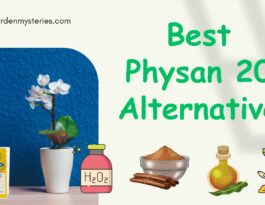
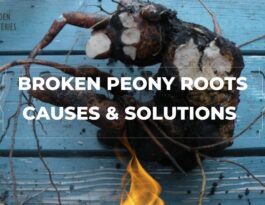

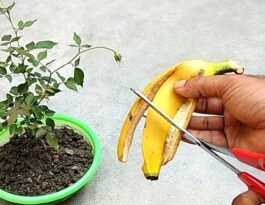
[…] you have tomato plants at home, you should learn an important fact that I covered earlier. That is Rock Phosphate vs. bone Meal for your tomato […]
yes. best wishes
[…] Don’t say goodbye yet, you can also check out the comparison on Rock Phosphate and Bone Meal for tomatoes. […]